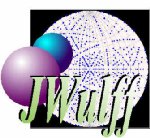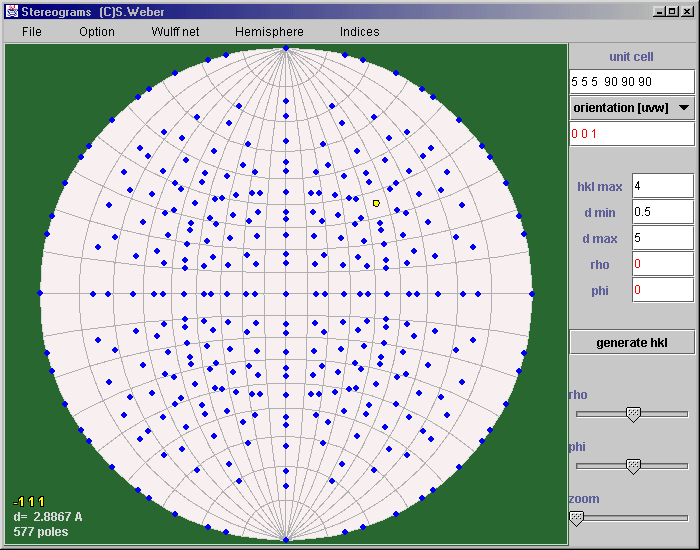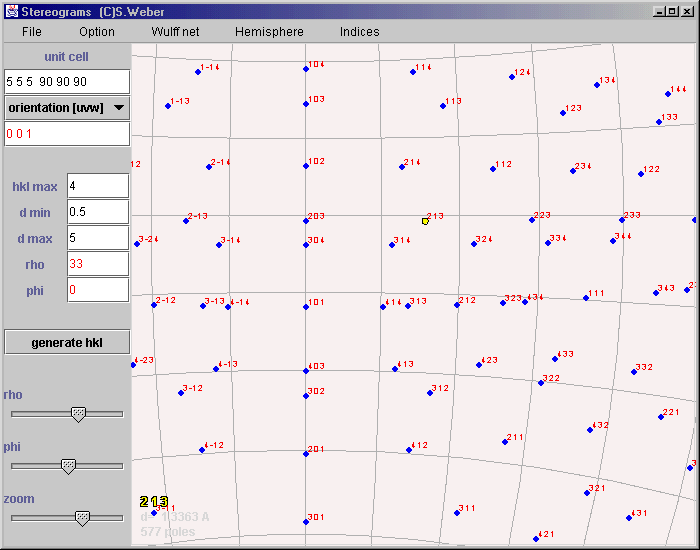see also JSV1.07
The
Java Structure Viewer JSV supports
PostScript output or direct printing (for WINDOWS) as
well as VRML output, GIF
and JPG output. It also calculates the Xray
diffraction intensities from the asymmetric unit
cell data. The Diffraction Viewer module
XRDL allows the 3D/2D display of the
calculated diffraction pattern.



